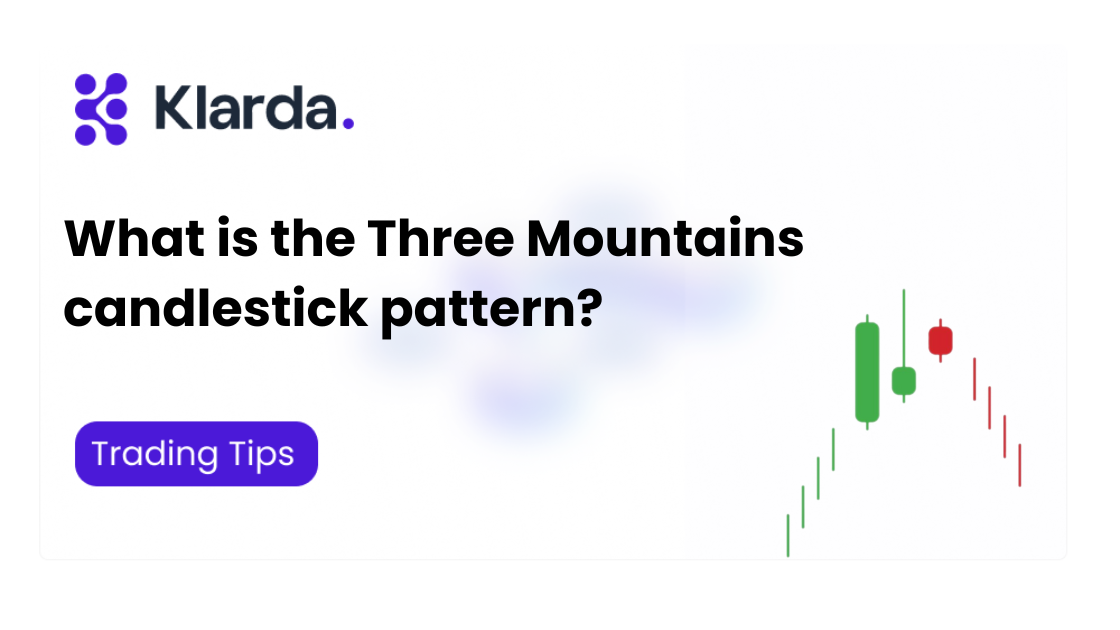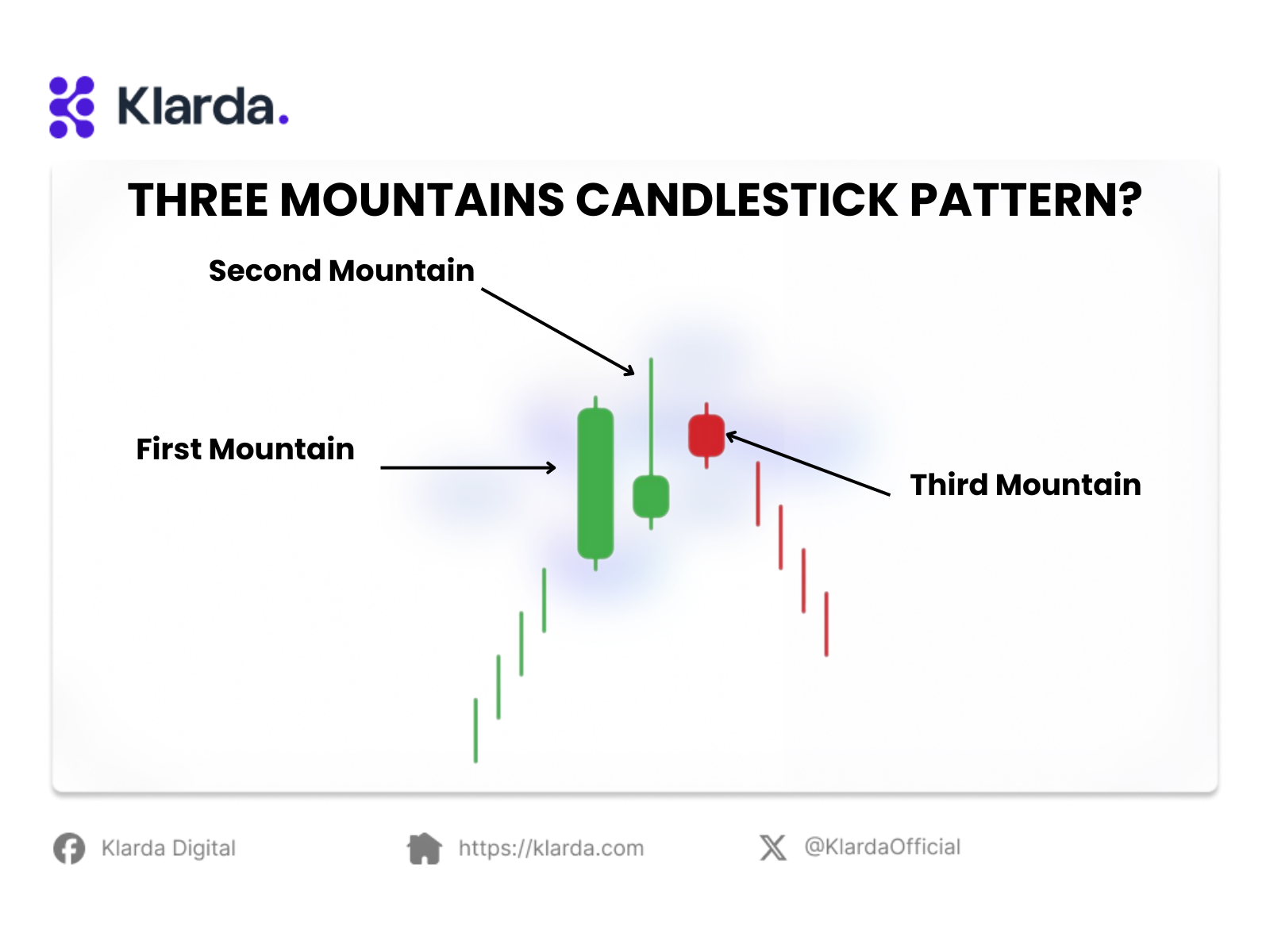Three Mountains Pattern
The Three Mountains pattern predicts a price reversal, commonly found at the end of a long-term uptrend; let’s explore its characteristics further below.
The Three Mountains candlestick pattern predicts a price reversal. While it can occur in any market trend, it is often found at the end of a long-term uptrend. Let’s explore the characteristics of this pattern further below.

KEY TAKEAWAY
- The Three Mountains candlestick pattern is a bearish reversal signal indicating the end of an uptrend, characterized by three descending peaks and declining volume, reflecting reduced bullish momentum.
- The Three Mountains pattern signals a downtrend when the price falls below support, with stop loss set above the peaks and the downside target calculated from the pattern's height.
- Traders may short or exit long positions when the price falls below the Three Mountains support level, confirmed by increased volume; the downside target is set by subtracting the pattern's height from the breakout point, with additional validation from indicators like MACD or RSI.
- The Three Mountains pattern provides a clear bearish reversal signal and supports bearish strategies but may produce false signals, relies on volume for accuracy, and requires additional confirmation and caution regarding target accuracy.
WHAT IS THE THREE MOUNTAINS CANDLESTICK PATTERN?
The Three Mountains candlestick pattern signals a bearish reversal, indicating the potential end of an uptrend and the beginning of a downtrend. It features three progressively lower peaks, forming a descending series that resembles mountains. This pattern appears after a strong uptrend, with decreasing peak heights reflecting a loss of bullish momentum, and typically shows declining volume, signaling reduced buying interest.

FEATURES OF THREE MOUNTAINS CANDLESTICK PATTERN
The Three Mountains top pattern, with three peaks at similar levels and pullbacks between them, confirms a downtrend when the price drops below the support level, prompting traders to exit long positions and enter short ones.
To manage risk, a stop loss should be placed above the peaks, where resistance is encountered. The downward target is calculated by subtracting the pattern's height from the breakout point.
HOW TO TRADE WITH THREE MOUNTAINS CANDLESTICK PATTERN?
When the price falls below the support level of the Three Mountains pattern, traders may initiate a short position or exit a long position. The support level is typically defined by the most recent swing low following the second peak, or by using a trendline connecting the swing lows between the peaks. Once the price drops below this trendline, the pattern is considered complete, and further price declines are anticipated.
Confirm the pattern with increased volume as the price breaks through support. The downside target is estimated by subtracting the pattern's height from the breakout point, but the actual price may vary. Traders can use other indicators, like a bearish MACD crossover or RSI decline, to confirm the Three Mountains pattern.
PROS AND CONS OF THREE MOUNTAINS CANDLESTICK PATTERN
Pros:
- Clear Reversal Signal: The pattern provides a straightforward visual cue of a potential bearish reversal with three progressively lower peaks, making it easier to identify a shift in trend.
- Visual Clarity: The descending series of peaks is distinct, making it recognizable on charts and understandable even for traders who may be newer to technical analysis.
- Supports Bearish Strategies: The pattern aligns with bearish trading strategies, allowing traders to plan short positions based on the expected reversal of an uptrend.
- Additional Confirmation: The pattern can be enhanced with additional indicators, like volume or RSI, which provide further confirmation and improve the likelihood of accurate trading signals.
Cons:
- False Signals: The pattern can produce false signals, especially in volatile or uncertain market conditions, where it may not always lead to a reversal.
- Volume Dependence: The pattern’s reliability is enhanced with increased volume during the breakout. Low volume may indicate weak selling interest, reducing the pattern's effectiveness.
- Requires Confirmation: Relying solely on the Three Mountains pattern might not be sufficient. Confirmation from other indicators or patterns is often necessary to avoid misleading signals and improve trading decisions.
- Risk of Missed Targets: The estimated downside target from the pattern is not always accurate. Market dynamics can cause prices to deviate significantly from the target, leading to potential discrepancies in expected versus actual outcomes.
That’s all the information we have on the Three Mountains candlestick pattern. We hope it helps you understand the end of an uptrend. For accurate and timely market insights, especially if you're new to trading, we recommend the Klarda app, which offers excellent features.
Updated 7 months ago